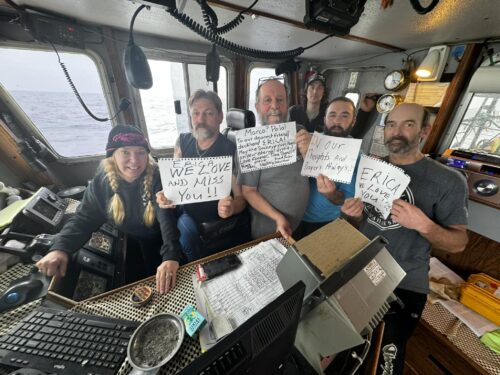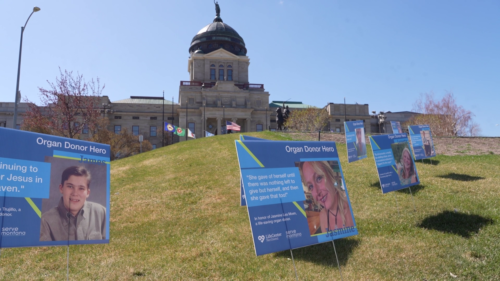Stakes are high for patients on the transplant waiting list
In May of 2025, the Centers for Medicare & Medicaid Services (CMS) issued its Organ Procurement Organization (OPO) Public Aggregated Performance 2024 and 2025 Reports for data years 2022 and 2023 — importantly, CMS data lags two full years.
LifeCenter Northwest was ranked as a “Tier 2” OPO based on our 2023 performance; meaning we were above average but below the top 25 percent of performers. This ranking stands in contrast to LifeCenter’s strong performance over the past five years, during which we set annual records for organ donation and transplant in our Donation Service Area (DSA) and increased the number of organ donors by 34% between 2020 and 2024. The number of lifesaving organs provided by LifeCenter for transplant rose by 32% at the same time.
What, then, accounts for the disconnect between the strong performance of LifeCenter Northwest and the CMS-assigned Tier 2 ranking? In short, the two metrics used by the federal government to rank OPO performance are insufficient and unvalidated.
For background, the CMS metrics rank OPO performance by donation rate and transplant rate and uses those rankings to assign each OPO to one of three tiers. OPOs below the median are placed in Tier 3. OPOs in the top 25% are assigned to Tier 1. OPOs performing above the median but below the top 25% are labelled as Tier 2.
The flaws in both the metrics and system of evaluation are obvious. Rather than judging OPOs by a fixed standard, the metrics grade all OPOs on a constantly shifting curve relative to median without accounting for the underlying conditions, making the comparison unfair and unjust. This means that even if an OPO maintains strong performance, it could still fall below the median and face severe consequences. In fact, under this flawed system, any OPO ranked below the median in 2026 faces decertification, a move that could throw the entire donation and transplant system into chaos.
Meanwhile, Tier 2 OPOs will not be recertified but instead forced to enter an undefined “competition” to continue their lifesaving organ donation work. The stakes are high for the patients awaiting transplant who may be left waiting longer because of disarray in the system if the sole OPO serving their area loses its ability to recover organs or spends its time and resources on a competitive process. This tiering system and its associated consequences are unlike any other healthcare entity that CMS regulates.
Furthermore, CMS’ metrics are inaccurate and do not reflect actual OPO performance. Therefore, the likelihood is high that OPOs that are performing well will nonetheless be closed by the federal government and later replaced by a recovery agency that performs at a lower level than the previous OPO or has insufficient experience in solving for the problems that would increase donation in the acquired service area. This is evident given actual examples such as OPOs being assigned to Tier 1 despite substantially decreasing numbers of organ donors over the past several years. There are many reasons why the metrics do not accurately measure and rank OPO performance — the following focuses on two that significantly impact LifeCenter Northwest:
OPOs are held responsible for a transplant rate when they do not have direct control over the outcome.
Transplant surgeons, not OPOs, decide whether an available organ is transplanted. Importantly, while organs made available for transplant continue to increase each year, the national rate of organs going unused by transplant centers also continues to rise. For example, in 2023, 28% of all recovered kidneys went unused, despite 26,253,656 offers being made by OPOs to place those 8,570 kidneys.
In 2024, according to the Scientific Registry of Transplant Recipients, the percentage of non-used kidneys was more than 25%. This meant the number of kidneys offered that went unused climbed to nearly 9,500 kidneys, while more than 3,000 patients died on the waiting list awaiting a kidney.
These regulations do not account for important differences in geography of service areas.
LifeCenter Northwest is a prime example of this problem. We serve the largest geographic area in the country; much of our donation service area is rural or remote, and we also have the most limited access to larger transplant programs of any region in the country. Consequently, many of the organs we recover must travel much farther to reach a transplant center. Increased distance makes it less likely that the organs we recover are accepted for transplant for a variety of reasons, including longer time outside the body before transplant, transplant program travel and timing impact, and increased travel costs to the transplant program.
Importantly, LifeCenter Northwest is the only OPO without transplant centers in three states in our four-state service area (Alaska, Idaho, and Montana). Only one other state in the country has no transplant program (Wyoming). Transplant center proximity and transplant volumes were the driving force behind LifeCenter Northwest exporting more than 50% of the organs we recovered in 2024. For kidney transplants alone, LifeCenter Northwest placed only 55% of kidneys recovered within 250 nautical miles of the recovery site, compared to the national average of 82%.
The current metrics fail to account for these clear and impactful differences, and therefore fail to accurately and consistently measure LifeCenter Northwest’s performance.
There is broad agreement across the donation and transplant community that performance metrics are necessary to drive improvement and hold organizations accountable for their outcomes. There is also broad agreement in the community that such important metrics be accurate. The flawed measurement system currently in place does not meet that goal.
It is time for CMS to reform and improve its regulatory metrics and OPO evaluation system so that our nation’s world-leading donation and transplant system isn’t hindered by bureaucratic missteps.






